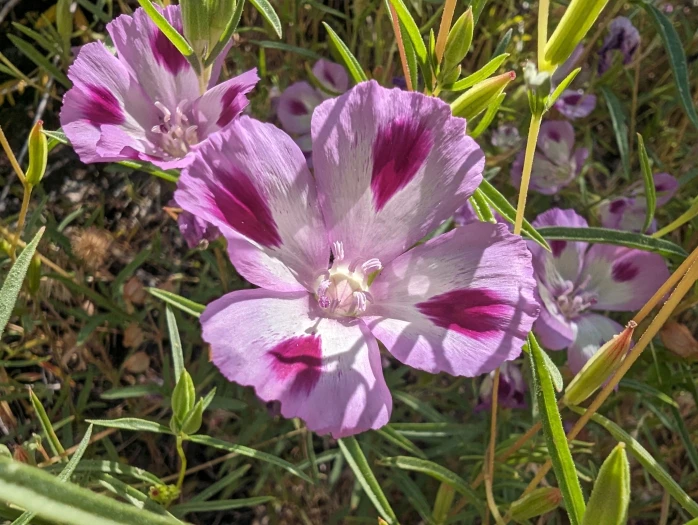Williamson’s Clarkia
(Clarkia williamsonii)
Williamson’s Clarkia (Clarkia williamsonii)
/
/

© Quinn Shemet
CC BY 4.0
Image By:
© Quinn Shemet
Recorded By:
Copyright:
CC BY 4.0
Copyright Notice:
Photo by: © Quinn Shemet | License Type: CC BY 4.0 | License URL: http://creativecommons.org/licenses/by/4.0/ | Uploader: sqshemet | Publisher: iNaturalist |

























Estimated Native Range
Climate Requirements for Kōriyama, Japan
| This Plant | Your Site | Plant Suitability for Your Location | ||
|---|---|---|---|---|
| • Precipitation | 10" - 55" | 47" | Aquatic | Aquatic |
| • High Temp. | 68°F - 102°F | 84°F | Your summer temperatures are normal for this plant. | Excellent |
| • Low Temp. | 10°F - 43°F | 26°F | Your winter temperatures are normal for this plant | Excellent |
This plant may not grow well at your location - your precipitation is too high.
Summary
Clarkia williamsonii, commonly known as Williamson’s Clarkia, is an erect annual herb native to the chaparral and oak woodlands of California’s northern and central Sierra Nevada foothills. It typically grows to a height of 1-3 feet (30-90 cm) and is characterized by its linear to lance-shaped leaves. The plant blooms from late spring to early summer, producing showy lavender flowers with a distinctive white area and a purple spot in the center, and less commonly, flowers may be solid deep red. The flowers are particularly attractive to a variety of pollinators.
Williamson’s Clarkia is valued for its ornamental flowers and is used in wildflower gardens, native plant landscapes, and as a border plant. It is well-suited to cultivation in Mediterranean climates and prefers full sun to partial shade. It thrives in well-drained soils and is drought-tolerant once established, making it a low-maintenance choice for water-wise gardens. While it is not commonly affected by diseases, it can be susceptible to powdery mildew in humid conditions. Gardeners should be aware of its potential to self-seed and spread within the garden.CC BY-SA 4.0
Williamson’s Clarkia is valued for its ornamental flowers and is used in wildflower gardens, native plant landscapes, and as a border plant. It is well-suited to cultivation in Mediterranean climates and prefers full sun to partial shade. It thrives in well-drained soils and is drought-tolerant once established, making it a low-maintenance choice for water-wise gardens. While it is not commonly affected by diseases, it can be susceptible to powdery mildew in humid conditions. Gardeners should be aware of its potential to self-seed and spread within the garden.CC BY-SA 4.0
Plant Description
- Plant Type: Herb
- Height: 1-3 feet
- Width: 0.8-1 feet
- Growth Rate: Rapid
- Flower Color: Purple, Red, White
- Flowering Season: Spring, Summer, Fall
- Leaf Retention: Deciduous
Growth Requirements
- Sun: Full Sun, Part Shade
- Water: Low, Medium
- Drainage: Fast, Medium
Common Uses
Bee Garden, Butterfly Garden, Low Maintenance
Natural Habitat
Chaparral and oak woodlands of California’s northern and central Sierra Nevada foothills
Other Names
Common Names: Williamson’s Clarkia
Scientific Names: Clarkia williamsonii, Godetia viminea var. congdonii, Godetia williamsonii, Oenothera williamsonii
GBIF Accepted Name: Clarkia williamsonii